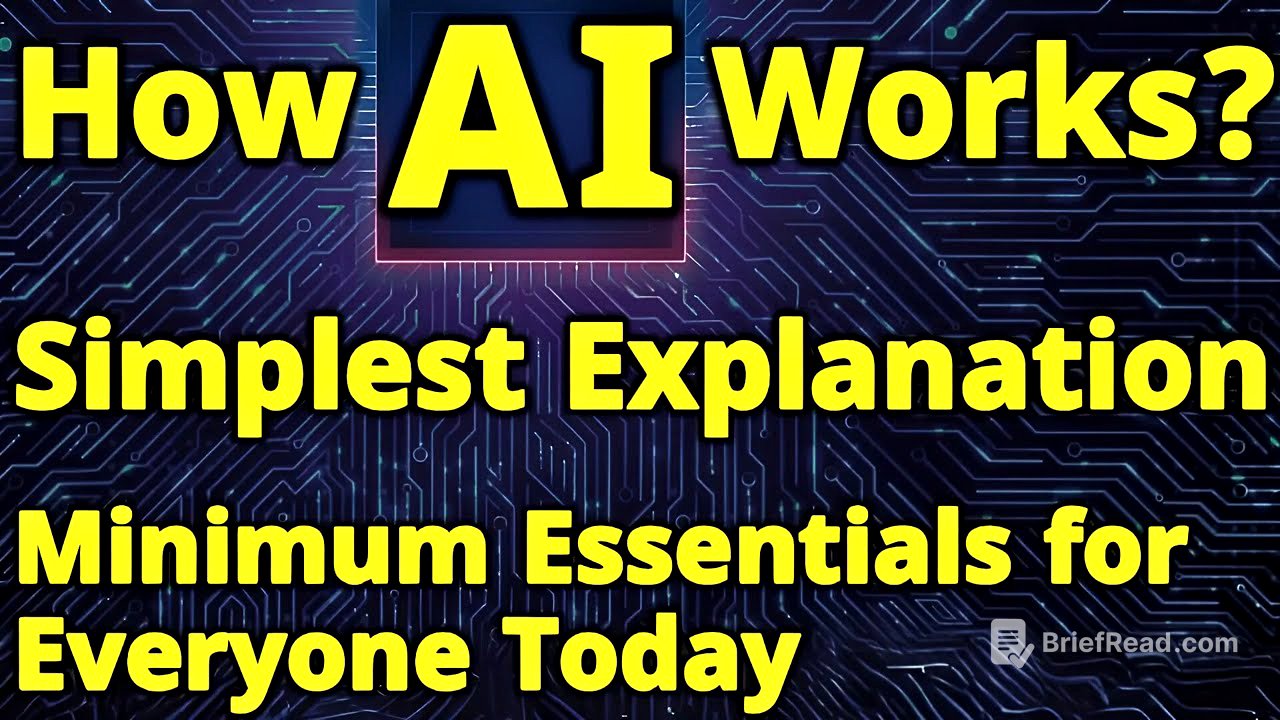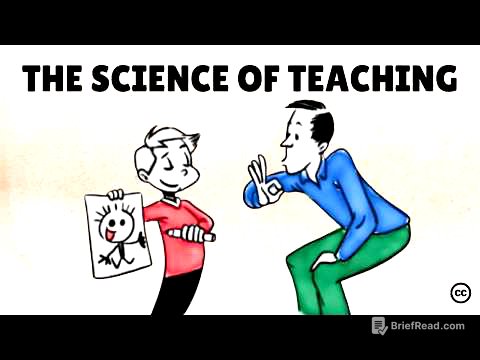TLDR;
This video explores the reality of artificial intelligence, distinguishing it from its portrayal in science fiction. It explains what AI is, how it works, its different types, and whether it could become a threat. The video highlights the importance of understanding AI's limitations, the factors driving its growth, and the ethical considerations surrounding its use, including the "black box" problem and the potential for bias in training data. It also discusses the different categories of AI based on capability: weak AI, strong AI, and super AI, and addresses common fears about AI, such as job displacement and the possibility of AI turning against humanity.
- AI is a tool that can be used for good or harm, depending on who is using it.
- The data used to train an AI must be completely accurate and unbiased.
- We must learn how to work with AI, not against it.
Introduction: AI in Modern Life [0:00]
The video starts by addressing the common fear surrounding artificial intelligence, often fuelled by science fiction movies depicting AI as a villain. Despite AI's increasing presence in daily life through tools like AI cameras, virtual assistants, and algorithms on social media, it hasn't behaved like the evil AI portrayed in films. This raises the question of whether there's a difference between the AI in movies and the AI we see today, prompting an exploration of what AI is, how it works, its types, and its potential to become a threat.
Understanding Artificial Intelligence [2:08]
The video explains that while AI assistants like Alexa and Google Assistant are familiar, the arrival of tools like Chat GPT and Google Gemini has made people realise how far AI has come. It's important to remember that these tools are designed to mimic human conversation and don't truly understand things like humans do. Intelligence, in humans, is the ability to learn, make decisions, and solve problems. Artificial intelligence is when a machine exhibits these abilities. However, computers have long been able to perform calculations faster than humans, but AI is different because it involves computers doing something new by learning from data and recognising patterns on their own, without specific programming.
How AI Works: A Bird Identification Example [3:23]
To illustrate how AI works, the video uses the example of a program designed to identify birds. The program defines unique features of birds, such as two legs, wings, feathers, and a beak, and assigns a weightage to each feature. When the program encounters a new image, it scores the image based on these features. If the score is high enough, the program identifies the image as a bird. The program can adjust the weightages based on feedback, learning from its mistakes and refining its internal settings. This process of showing the program more images and correcting its errors is called training.
Key Points About AI Training [8:17]
The video highlights three key points about AI training. First, AI doesn't truly understand what it's identifying; it's simply processing numbers and weight values associated with different features. Second, training AI requires massive amounts of data and human feedback to correct mistakes. Third, AI is task-specific; each AI can only perform the specific task it was trained for, requiring separate programs and training for different tasks. These limitations explain why the development of AI took longer than science fiction movies suggested.
Factors Driving the Growth of AI [10:26]
The rapid growth of AI today is due to two key factors: the dramatic increase in computer processing power and the rise of social media. Increased processing power allows computers to run complex AI programs, while social media provides access to vast amounts of data for training AI systems. For example, when users tag photos on social media, they're helping AI learn to recognise objects and understand natural language.
The Blackbox Problem and Transparent AI [12:36]
AI training is handled automatically by software systems, leading to a "blackbox problem" where developers have little understanding of the AI's decision-making process. This makes it difficult to figure out why an AI makes a mistake. For example, an AI trained to identify animals misclassified dog photos as wolves because it associated snow in the background with wolf images. To address this, "transparent AI" has been proposed to make AI systems more understandable, but it's still a developing concept.
Bias in AI Training Data [14:51]
The data used to train AI must be accurate and unbiased. If the training data contains flaws or biases, those issues will reflect in the AI's behaviour. For example, an AI system used to shortlist job candidates selected only male candidates because the training data came from past hiring decisions where the company preferred hiring men. This highlights the importance of carefully checking data for fairness and neutrality to prevent discrimination in AI decisions.
Human Responsibility in AI Monitoring [16:16]
When an AI makes a mistake, it has no idea that it made a mistake, nor does it feel any regret. Therefore, the responsibility to monitor AI behaviour will always rest on humans. We must be the ones to watch, to correct, and to decide what is acceptable.
Types of Artificial Intelligence [16:47]
The video outlines several types of AI, including natural language processing (NLP) used in virtual assistants, generative AI that creates new content like text and images (e.g., Chat GPT and DALL-E), and computer vision AI used for image and face recognition. Other types include robotic AI, speech recognising AI, explainable AI, and planning and scheduling AI. Complex tasks can be performed by combining two or more types of AI, as seen in deep fake videos.
Weak AI, Strong AI, and Super AI [20:32]
AI can be classified based on its level of capability: weak AI, strong AI, and super AI. Weak AI, or narrow AI, is designed for one specific task and is the type of AI that exists today. Strong AI, or artificial general intelligence, would have broad capabilities like humans, but it doesn't exist yet. Super AI would be more intelligent than humans in every way and is currently purely speculative. The possibility of AI turning against humanity is often associated with super AI.
Concerns and Realities of AI [22:40]
Concerns about AI turning against humanity are often voiced, but many experts believe such fears are unfounded because today's AI systems lack consciousness or self-awareness. Even if an AI becomes smarter than humans, it doesn't necessarily mean it will want to harm us. The real concern is the potential misuse of AI by humans, such as influencing public opinion. While AI may lead to job displacement, history shows that humanity adapts and creates new types of jobs. The key is to learn how to work with AI, not against it.









